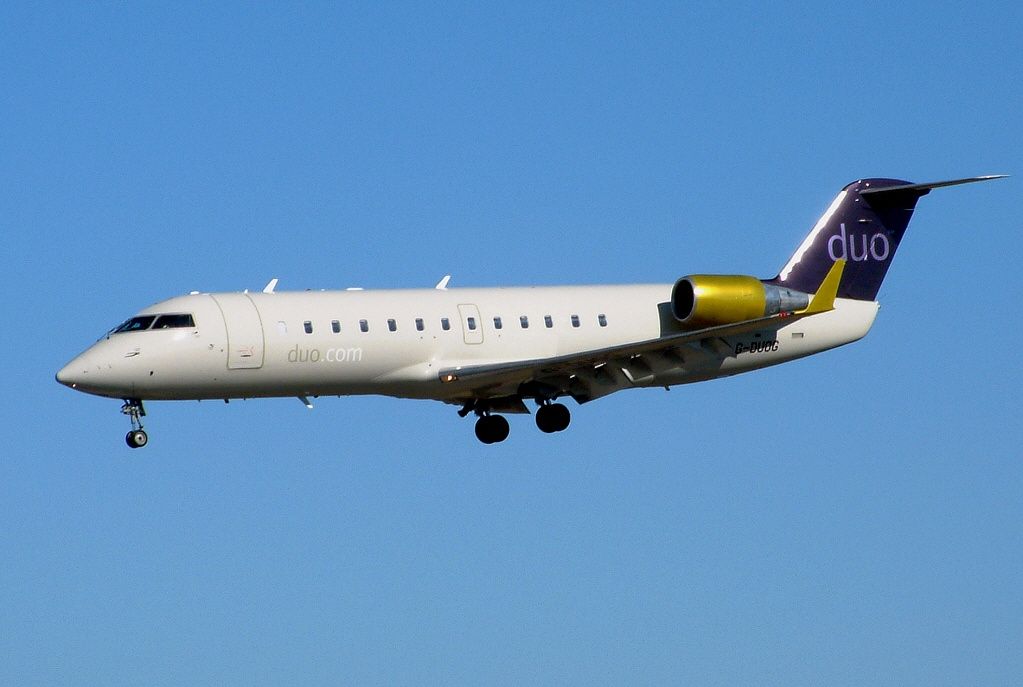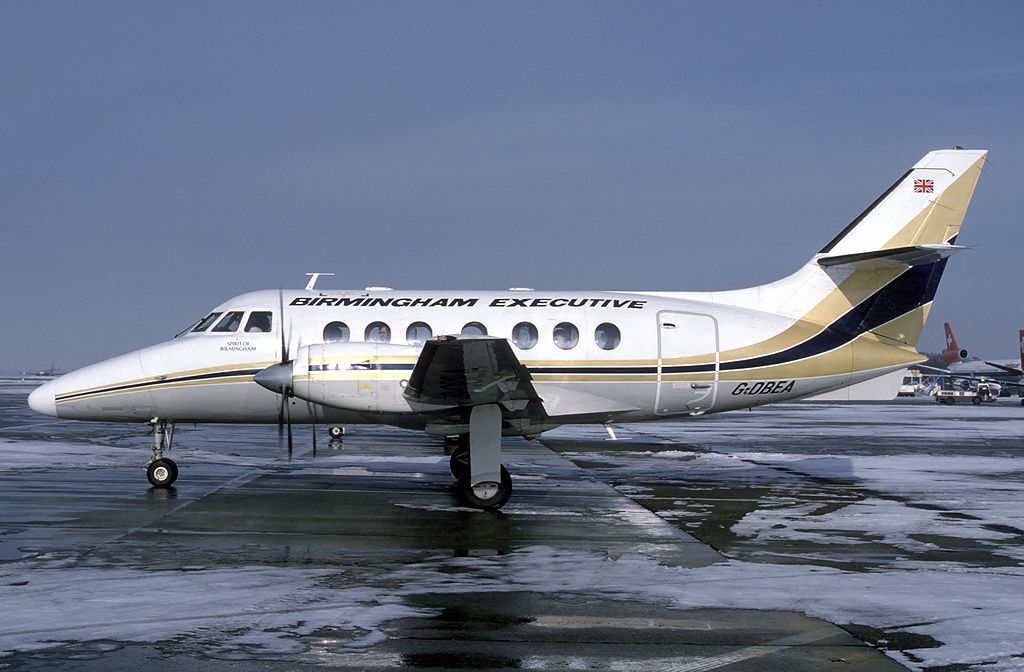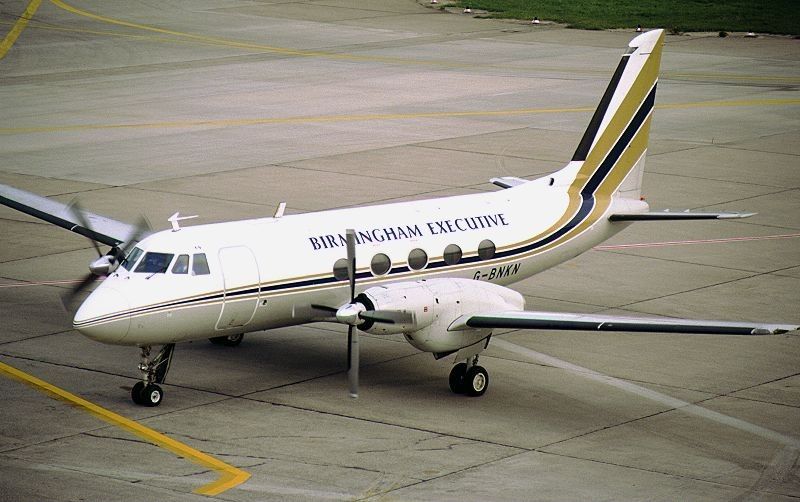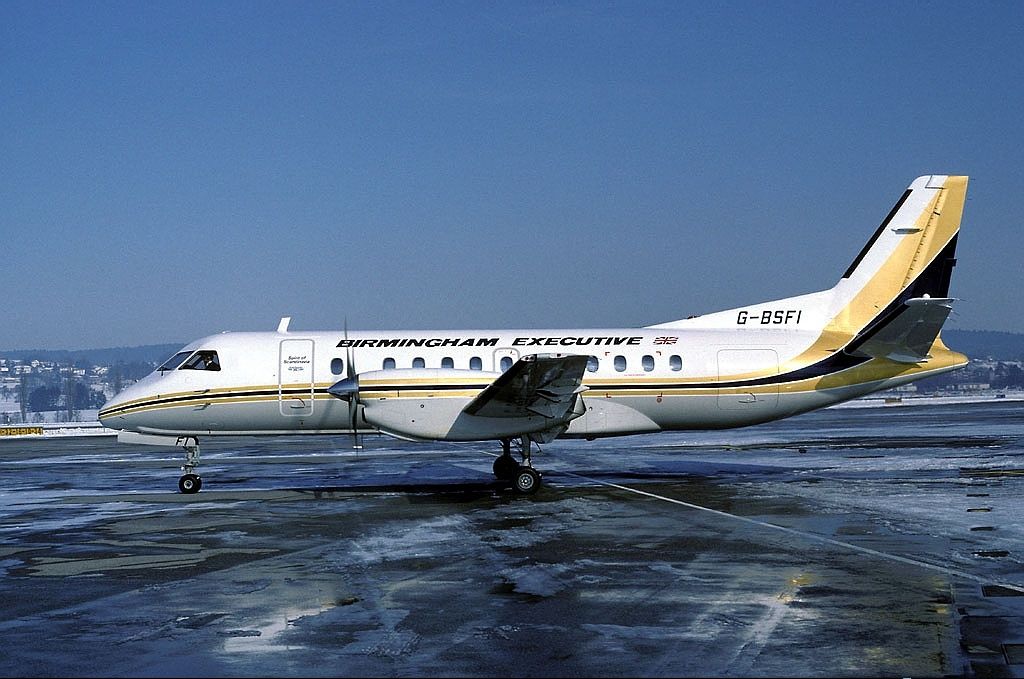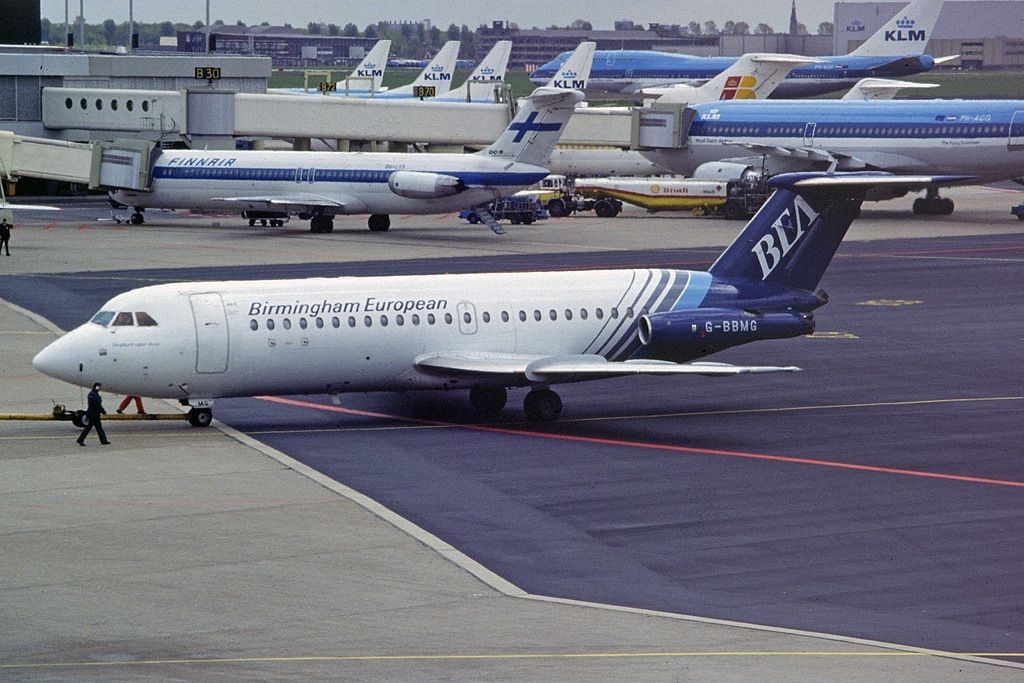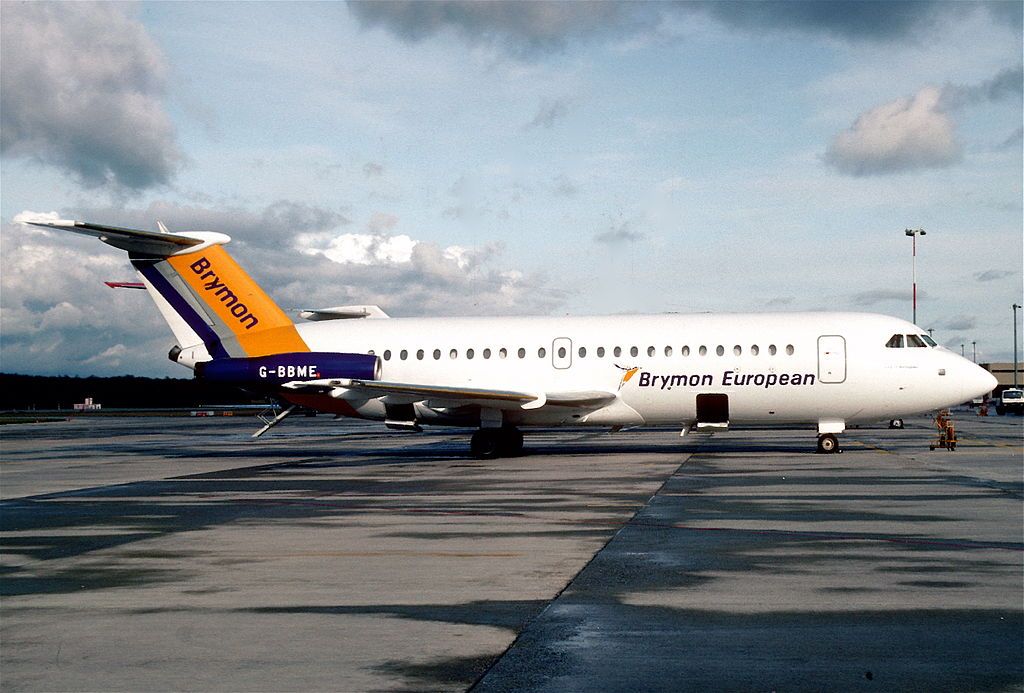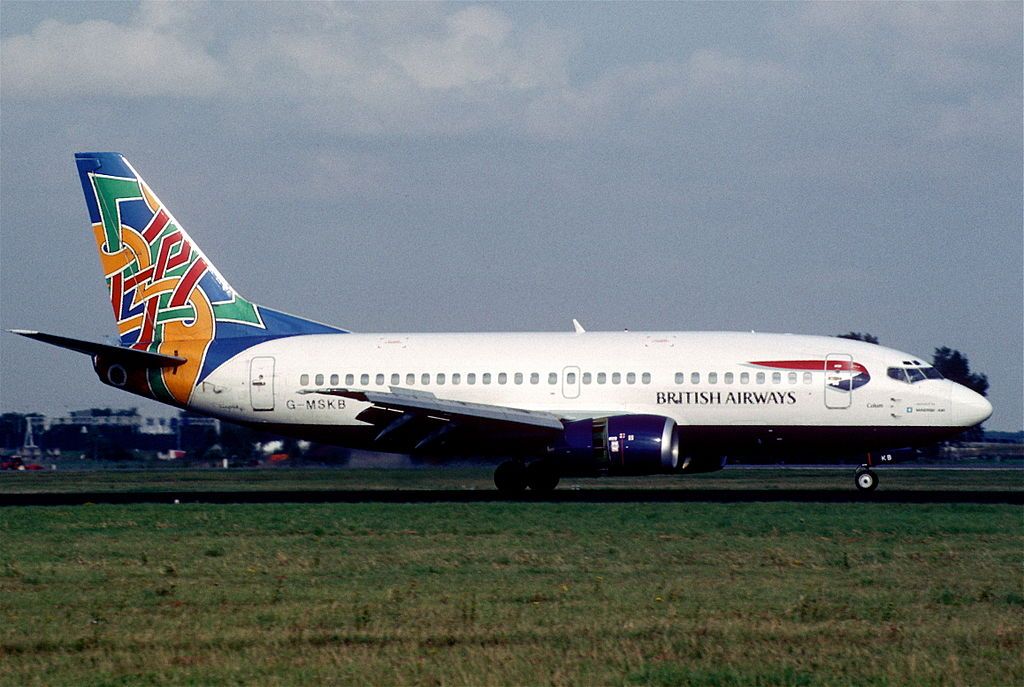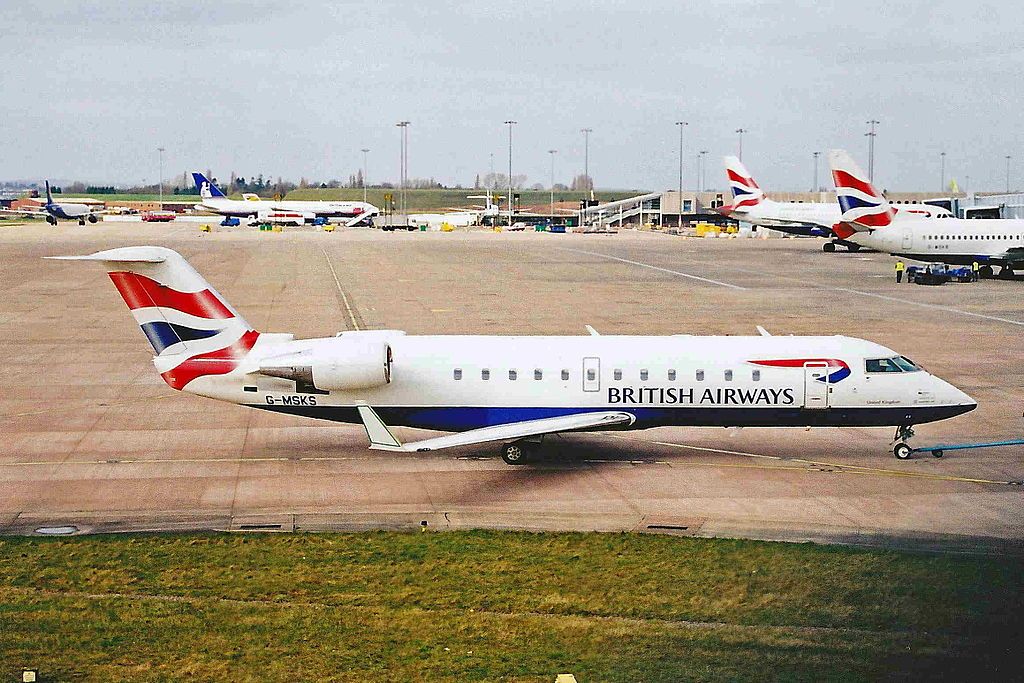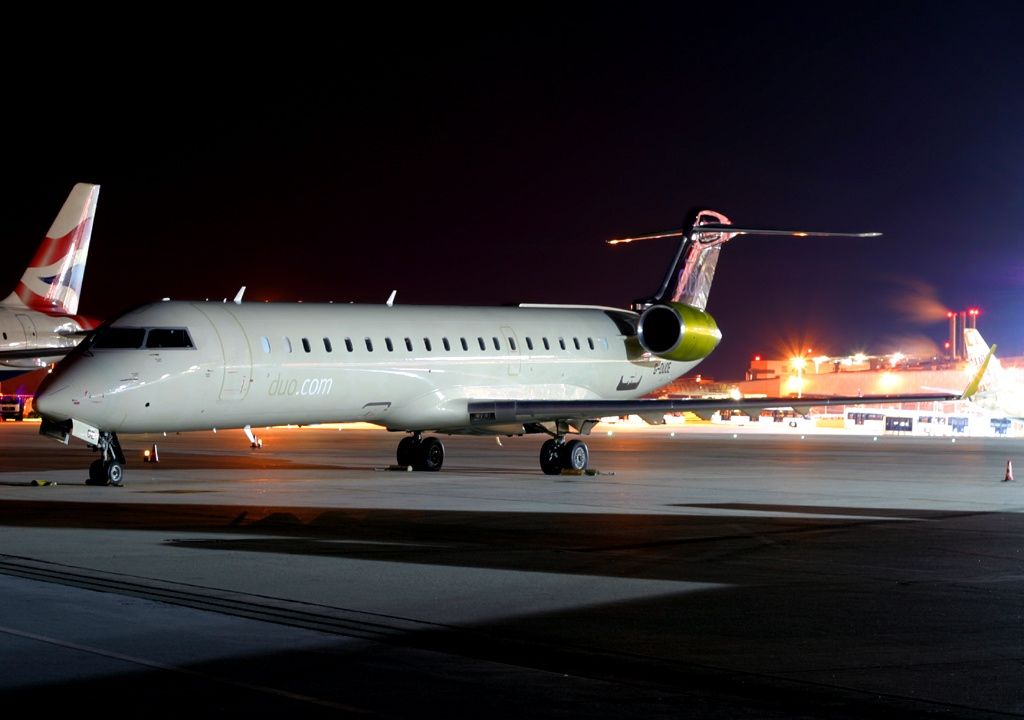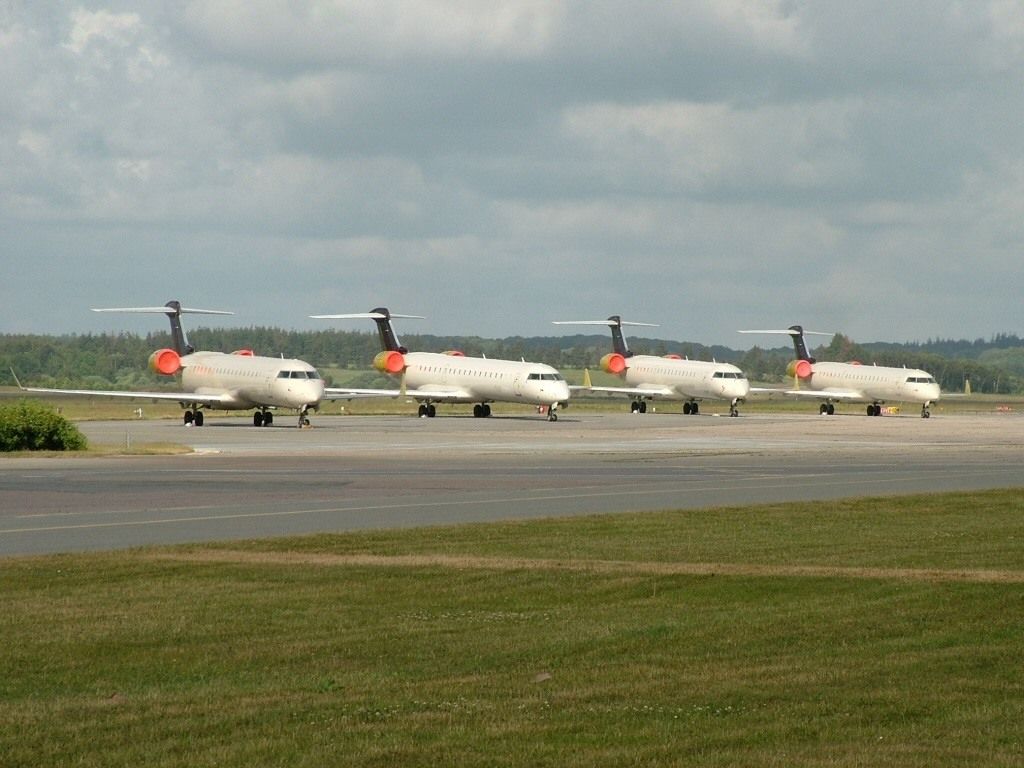The business-traveler focussed airline ceased operations after a major investor withdrew, leaving the carrier with no funds to operate and over a thousand passengers stranded.
A carrier steeped in regional airline history
Although Duo Airways lasted just 11 months under that title, the airline's roots went much further back in UK regional commercial aviation history.
Starting life as Birmingham Executive Aviation in June 1983, the carrier's first flight took off from Birmingham International Airport (BHX), located in UK Midlands region. The fledgling carrier began life with a tiny fleet of two British Aerospace Jetstream 31 turboprops, operating from its Birmingham base to Copenhagen and Zurich.
With the addition of a third Jetstream towards the end of 1983, the airline expanded its network to include services to Milan Linate (LIN). The airline also entered the first of a series of partnerships with British Airways, operating to Inverness under a codeshare agreement with the British flag carrier, along with BA taking a small minority shareholding.
With the expansion of the network came the expansion of the airline's fleet, with the addition of a Saab SF340A in April 1984, primarily to serve a new route to Geneva (GVA). However, with poor dispatch reliability and the resulting passenger inconvenience, the airline soon dropped the Saab from its fleet, along with another that was due to join the airline.
With the need for a larger aircraft remaining unfulfilled, the airline's management looked to America and sourced a 24-seat Grumman Gulfstream G1 turboprop that would suit its operation. In April 1986, the first aircraft arrived, making the airline the first UK operator of the type. A total of four G1s were delivered to the carrier, with the fourth being used as a backup and for spares.
Early financial woes
Although early feedback was highly favorable for the airline, load factors and yield struggled, especially on routes where the airline came up against competition from legacy carriers such as Lufthansa and Swissair, both operating into Birmingham.
These carriers' larger jets and quicker flight times were often a much better proposition than Birmingham Executive's small propeller aircraft. This, coupled with the impact of the poor performance of the SF340 in 1985, had a severe knock-on effect on the company's outlook, and the airline became in dire need of financial help.
With British Airways already having invested in the company and it operating several routes on BA's behalf, in December 1988, Birmingham Executive Airways was taken over by The Plimsoll Line (TPL) for £1.92 million (US$2.3m).
TPL was the holding company for Brymon Airways and Plymouth Airport, in which BA and Denmark-based AP Moller-Maersk Group (owner of the airline Maersk Air Denmark) both held a 40% stake.
Following the takeover, the airline re-branded as Birmingham European Aviation in August 1989. Five BAC One-Elevens joined the fleet from BA, alongside a pair of Fokker 50s from Maersk Air. With the introduction of these aircraft into the fleet, the Jetstreams and Gulfstreams were gradually phased out.
Birmingham European becomes Brymon European
Despite reasonable stability and a slowly improving outlook, the airline never saw the success it needed to stay afloat as an airline in its own right. The management at TPL was desperate to turn the ailing airline's fortune around and decided to combine its operation with their Plymouth-based regional carrier, Brymon Airways.
Officially announced in May 1992, scheduled operations of the newly merged Brymon European Airways began on October 25th, 1992. A new blue and yellow livery was applied to Birmingham European's five 1-11s and sole J31, along with Brymon's fleet of De Havilland Canada Dash -7 and -8s.
The carrier now had three bases: Birmingham, Plymouth, and Bristol, and the plan was to combine the two carriers' former networks to develop a broader and more powerful airline. However, the Brymon European Airways name did not last for long. On August 1st, 1993, the airline was sold, with BA purchasing the Brymon assets, while the AP Moller-Maersk Group brought the BEA shares.
Then comes Maersk Air Ltd
Following the sale and yet another name change to Maersk Air Ltd, cooperation between the carrier and BA was stepped up, with the new airline operating as a full franchise of BA. The famous 'Landor' color scheme was applied to the airline's fleet, cabin staff wore BA uniforms, delivered the same onboard service, and the two frequent flyer programs were combined.
In 1996, the Danish owners decided to invest £250 million to expand Maersk Air Ltd's operations and replaced the aging One-Eleven fleet with four Boeing 737-500s leased from the Danish parent company in late 1996.
The carrier then looked to regional jet manufacturers Embraer and Bombardier for its second phase of modernization. In early 1998, management signed an agreement for up to 15 Bombardier CRJs, with options for a further 12 aircraft.
Love aviation history?
Expansion with the Bombardier CRJ
Split between the 48-seat 200 series and 68-seat 700 series, the order would allow expansion to its existing network and enter the Mediterranean market. The first 200-series arrived in the second quarter of 1998, followed by four more examples by the end of that year.
By November 1999, further CRJs had joined, with Maersk Air Ltd becoming the UK launch customer for the larger -700 series. The airline now offered 370 flights across Europe per week from its Birmingham base and operated a fleet of ten CRJ-200 and five -700s, plus four 737-500s and a single Jetstream 41.
In early 2001, the long-standing franchise with British Airways came into doubt, with some of the Maersk Air Ltd routes being taken back in-house by BA. One-time partner Brymon also launched several competitive services from the Midlands airport.
Later that year, the atrocities of 9/11 saw the bottom fall out of the business travel market, and Maersk Air Ltd was put up for sale by its Danish owners.
The rapid rise and fall of Duo Airways
A month later, the carrier's assets were purchased in a management and employee buyout, beginning the final chapter in the long line of Birmingham's home-based airline. In June 2003, Duo Airways rose from the Maersk Air Ltd ashes with a fleet of three CRJ200s and five CRJ700s.
Although passenger loads were sluggish in reaching expected levels, Duo won praise for its onboard offering. The carrier won several awards, including the Sunday Times' Best New Airline in 2003.
Like its previous incarnations, Duo continued with a high level of onboard service. But in a post-9/11 world of rapidly expanding low-cost airlines in the UK, such as Ryanair and easyJet, Duo struggled to convince the public of its unique selling proposition.
On May 1st, 2004, Duo Airways unexpectedly ceased operations after a major investor withdrew funding. As a result, over a thousand passengers were left stranded across Europe, and the airline's 300-strong workforce was out of a job.
The end of the line
The end of Duo Airways brought to a close over 20 years of the Birmingham-based carrier. In the twists and turns of over two decades of operations, the airline underwent a series of name, ownership, and branding changes. In the end, however, it was that old specter of aviation, namely lack of financial stability, that finally brought the shutters down on the once-proud carrier.
Do you remember any of the airlines that ended up becoming Duo Airways? Perhaps you even flew on a Duo service yourself? Let us know in the comments.

